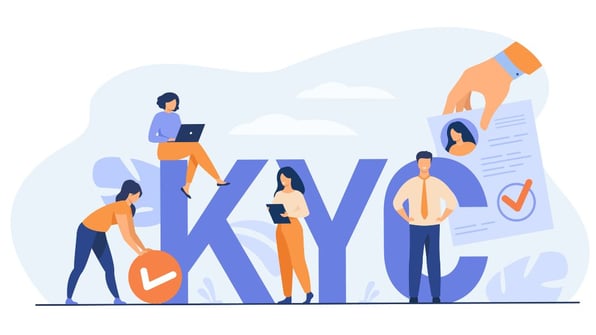Banking institutions have always had a large amount of data on their customers, and over the years this information has been used by the industry to generate new financial products, calculate risks, detect fraud and guide their commercial and business strategies.
Today, in a hyper-connected era in which digital customers generate more and more data and are more demanding, it seems obvious that institutions use this information to improve their product and service offerings. However, we are a long way from seeing this in today's digital banking, as very few are leveraging this information to create hyper-personalized experiences.
This is being talked about as the future of digital banking.
At Rizeapp, it has become our present. Through hyper-personalized experiences, we seek to offer products that are tailor-made to the specific needs of customers at specific times to enhance their experience with a close-up, personal approach.
But, what exactly is "hyper-personalisation" when we refer to online banking, and why is it becoming increasingly important?
Hyper-personalisation in banking: Everything you need to know
According to AWS's Banking Trends 2022 research, 50% of digital banking consumers expect their bank to provide a highly personalized experience.
By definition, hyper-personalization is the process of using AI and real-time data to display highly targeted products and content to shoppers.
Applied to online banking, hyper-personalisation is a consumer-centric approach to digital banking that leverages behavioral data science and the use of Artificial Intelligence (AI) to deliver relatable products and services to consumers.
McKinsey’s research report, ‘Marketing's Holy Grail: Digital Personalisation at Scale’ claims that personalization can reduce acquisition costs by up to €50, increase revenue by 5-15% and increase the efficiency of marketing spend by 10-30%.
Hyper-personalisation helps to create a more personalized customer experience, arguably more appealing than generic offers. It also gives the bank a better understanding of what products and services its customers are likely to be interested in, which can help retrieve key information for future product development.
Banks may use different data from customers to personalize their experience, including:
- The basic information you provide when you open an account (e.g. name, address, date of birth).
- Contact information (e.g., email address, phone number).
- Marketing preferences (e.g., whether you would like to receive promotional emails or text messages from the bank).
- Account activity data (e.g., deposits, withdrawals, payments).
- Behavioural data (e.g., segment customers based on their consumption, habits, needs and preferences).
Advantages of hyper-personalisation in online banking
In addition to the obvious increase in revenue, incorporating hyper-personalisation in online banking is necessary because of the benefits it offers:
- Clear and distinctive branding: hyper-personalisation provides a competitive advantage to establish brand visibility and a unique and clear value proposition.
- Open banking: creating easy access to financial data along with customer transaction data to understand the customer profile. The Rizeapp algorithm learns and pre-empts client needs and potential wealth management scenarios, across a broad set of financial services, all done through a natively-integrated financial hub. It can even anticipate life goals and objectives that even the customer himself didn't know he had.
- Rapid technological innovation: we are living in the “Age of the Customer”. Rizeapp delivers on the industry's expectations by understanding the customer better. We are talking about customer-pulled innovation; in other words, offering innovative services in line with what the customer wants.
- Financial inclusion: with hyper-personalisation, more people can have access to certain benefits and service offerings that they otherwise would not have enjoyed. By softening their resistance to the unknown, Rizeapp is offering tools to the general public that were previously reserved for richer segments of society; guiding and teaching all generations on how to improve their financial well-being.
5 Examples of Hyper-Personalisation in Banking
Here is a list of examples of how hyper-personalisation can be leveraged in the banking industry.
- Tailor-made product recommendations
This is the kind of personalisation we encounter when we open Netflix and see a number of options in the catalog that “we might like". This personalized style is starting to shape the future of online banking too.
It consists of displaying products based on a customer's real-world context. For example, offering products related to those previously purchased, taking information from their purchase history or even offering a product refill.
- Predict customer needs
Rizeapp is among the first financial institutions to embrace this. With real-time data and artificial intelligence, we can perform predictive analytics to determine what customers will want in the future by looking at past and current data patterns.
Current banking apps mainly offer convenience and speed across generalized financial products, like payments facilities. Going far beyond this, Rizeapp learns and predicts client needs and goals, to generate meaningful, actionable insights that guide the customer to a better financial status.
- Make promotional offers
These are offers made on a one-off basis that resonate with individual customer buying patterns. With sufficient data to accurately drive personalisation, financial institutions can now segment customers for promotional offers based on the customer's buying cycle.
With Rizeapp, customers can expect suggestions aimed to help them realise long-term saving goals, develop and diversify investment skills, or to simply improve their financial portfolio with, ie., a currency hedging idea; tailored specifically to their customer’s financial profile. So, if a customer visits the Starbucks franchise a lot, we can offer them to invest in shares of the company.
-
Creating omni-channel experiences
Our omni-channel approach aims to integrate data from all of the available channels for a seamless financial experience.
Rizeapp’s enhanced omni-channel data platform extrapolates current and future scenarios via how, when, where and on what financial transactions are made. It then constructs practical, personalized “insights” with relevant market information, learning opportunities, and actionable wealth-management ideas. Customers will be able to develop their wealth management experience across multiple touch points, but in a unified way, which helps reinforce brand permanence and increases overall engagement.
- Offering financial management
In providing financial management services, bankers can use data collected on customers spending habits, repayment behavior and other interactions to develop unique profiles.
This information can be used to offer specific content and products that are better tailored to each customer's needs.
Learning how to manage your money is essential to achieving financial well-being. In other words, having your finances under control, a basic pillar to help you achieve your work or personal goals, but also, according to experts, the key to feeling secure in the face of certain unforeseen events that may arise throughout your life.
Rizeapp has been designed as the perfect app to improve your money management and, therefore, achieve financial wellness. The application features an AI financial coach that analyzes and understands your financial behaviour, and helps you achieve financial wellness and increase your purchasing power.
Conclusions
Hyper-personalization is the future for banks, but also for their customers. It offers a wealth of benefits that can be broken down into different specialized services.
Rizeapp is a pioneer in offering hyper-personalized services in its app to increase financial fitness. Not only does it have services that help you improve your money management, but it also offers you a single point of access to all your financial life.
Want to try it out?




